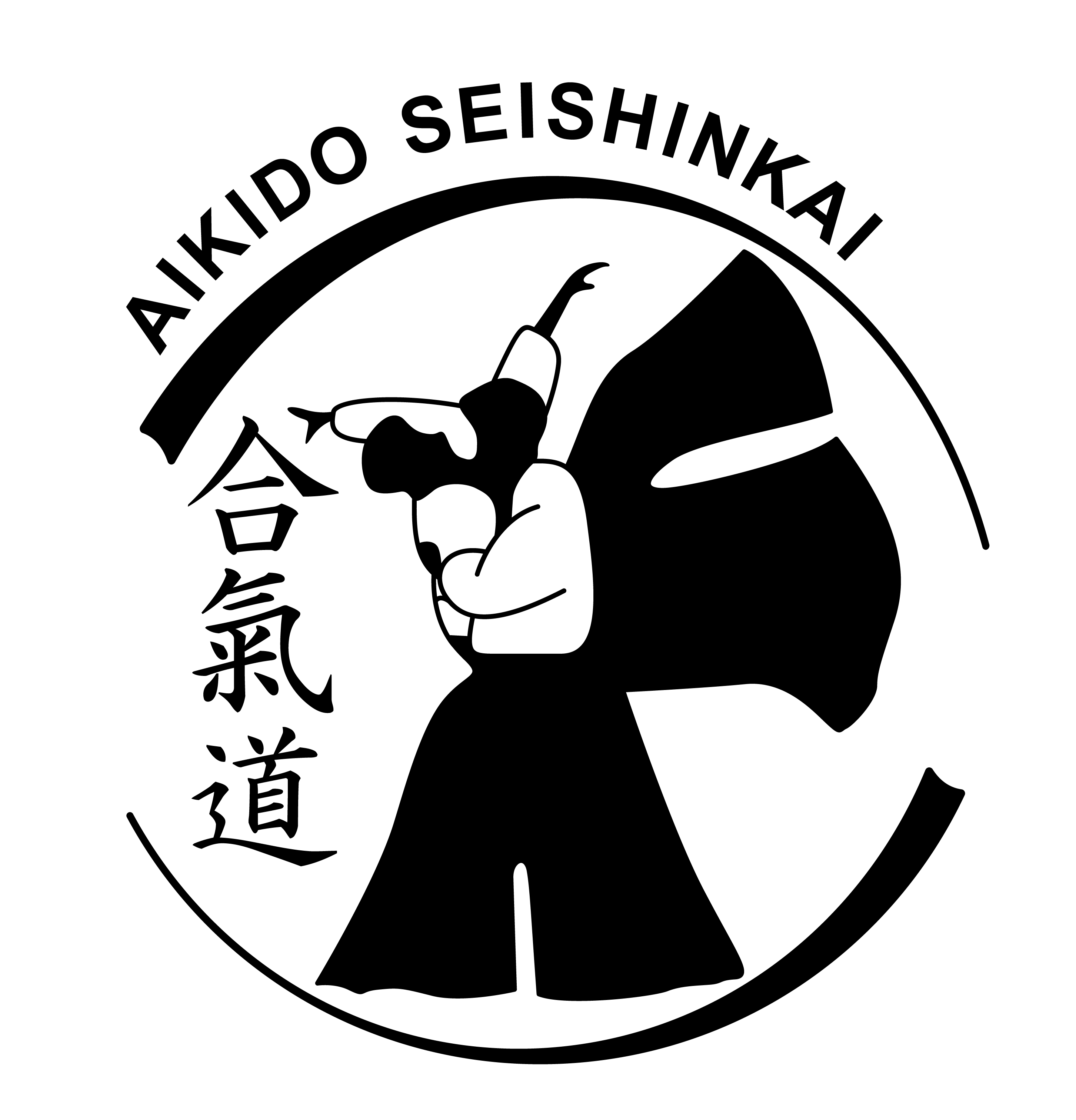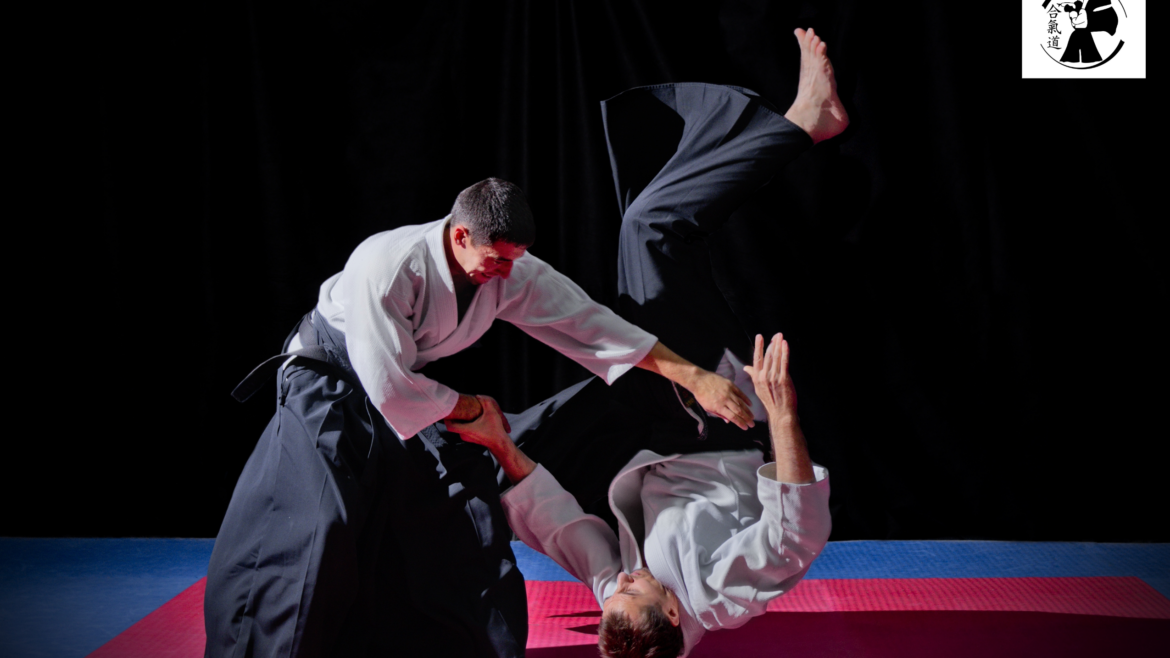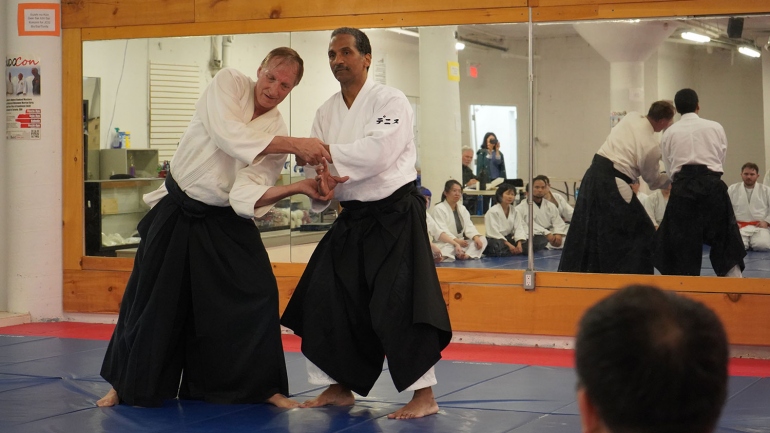Most Aikido practice consists of two partners taking turns in applying and receiving techniques. The
techniques are typically throws (nage waza) or pins (katame waza). In the process there may be painful
joint manipulations (kansetsu waza) or even percussive strikes to distract and unbalance (atemi waza).
Throughout the training there is an agreement that Uke will attack sincerely, i.e., clearly and without
faking, and then follow the technique. Nage (also called Tori or Shite) then attempts to perform the
technique in an effective manner without injuring Uke. Full concentration is required from both partners.
Ukemi, the art of receiving techniques, is just as important as applying the techniques. Obviously, this is
so that Uke does not suffer injuries from potentially deadly arts. Good ukemi, however, is more than just
self-protection. It allows for a challenging yet pleasant and rewarding experience for both partners.
Furthermore, it creates the possibility for advanced students to learn counter-techniques (kaeshi waza).
There is no one correct way to take ukemi. Provided that the attack is appropriately strong, the two
partners flow together, and there is no contest of egos, nearly any form is acceptable. Uke should be alert,
flexible in mind and body, and prepared for surprises. Staying just slightly behind Nage`s movement,
Uke sacrifices himself or herself so that Nage can learn to be both powerful and graceful.
Jumping breakfalls (tobi ukemi) add a further challenge and allow for more speed and energy in the
throws. No one needs to learn to jump. Front falls, front rolls, back falls, and back rolls are sufficient.
But those who are willing and able should try to master being projected through the air.
Ukemi is learned primarily through routine practice, although it is good to spend some time in class
specifically working on how to receive techniques. We make demonstrating basic falls and rolls part of
our test requirements in order to emphasize that they are keys to proper training.
In our dojo video collection we have two programs dedicated to ukemi. One is by Bruce Bookman and
the other is by Donovan Waite. Both of these fine instructors were long time students of Yamada Shihan
and both took lots of ukemi for him. They certainly learned on the job, so to speak. Each has a somewhat
different technical approach from the other. Both programs are well worth viewing carefully.
The way I do and teach ukemi reflect my experience and best judgement. As you train, consider your age
and physical ability so that you can develop a system that works well for you. It is a good idea to spend
time after class on ukemi with the aid of senior students.




